HVAC decision for new construction in Kansas City area
Tammy Kahler Johnson
4 years ago
Featured Answer
Sort by:Oldest
Comments (88)
User
4 years agoUser
4 years agoRelated Discussions
New Construction - HVAC Dilemma
Comments (9)broconne - well I can say that I am in a similar situation... Building 4,000 sq feet in Cary. I have the luxury of custom construction and still have to talk to my GC. I will probably do dual fuel on the 1st floor and HP only on the 2nd. Dual fuel being 80% gas and heat pump. Electric strips are never the best choice - absolutely never. You will save money with the setup I am proposing but ROI is hard to figure. There are ways to do it but I don't have the answer. It really should be less than 5 years for a simple switch to HP in this climate - but perhaps greater than 5 years for the gas/hp hybrid setup. But know that most people don't do HP around here because there is the impression that it won't warm the house enough (for a large house). Part of that is because insulation is not the best - since we have a fairly mild climate. Also - HP's are seen as less durable - which in fact they are. I've built semi-custom before and never even thought of asking about changing the HVAC. So - I am not surprised that no one in your development has mentioned it. I wish someone would give ROIs on different options but there are so many variables. Probably best is going greater than code on attic insulation. Next is reducing air infiltration. Next would be high efficiency HPs. Those are my 3 choices. My windows are already pretty good and I am going to price out foam - primarily for the attic....See MoreHelp with Replacement HVAC decision
Comments (7)There are no Comfort series with a Carrier E Coil that qualify for the energy credit. The Comfort series is estimated to save $23 per year over the Base model, a payback of 65 years ($1,500/$23). And the higher price of the Comfort series is not factored into that payback period. The Carrier dealer is offering 10 year all parts warranty as part of the price. So no difference there. Located is a brick corner at the remotest corner of the house, sound is not an issue and at only 4 dB greater sound rating, I would rather enjoy the dollars saved. I'll have a variable speed fan and Thermidistat to achieve proper humidity control. I have made a note to ask the contractors about the HP option again. We briefly discussed it earlier and the initial cost was high enough that I calculated a payback that was not justified. Given my opinion, FWIW, that electric rates will rise much faster than nat gas rates over the next 10 to 20 years due to the current and expected continued glut of nat gas supply on the market and in the ground combined with the likelihood that this cap and trade energy legislation will pass causing all electric generating companies costs and our bills to rise dramatically, I expect significant savings by using gas relative to electricity, Again, just my opinion, but also my dollars. I hope it doesn't actually happen. But I will explore the HP option again. Thanks for your suggestions. Here is a link that might be useful: http://ths.gardenweb.com/forums/load/hvac/msg082325342972.html?4...See MoreHelp w/ HVAC decision for new construction, quotes attached.
Comments (20)your hvac systems are oversized. all bids come out to about 400 sq ft per ton. hugely oversized for a well sealed house. where are you putting the foam insulation? better than filling stud cavities in walls, using 1" foam sheathing to exterior, conventional insulation & airtight drywall approach to interior is a better more affordable high performance wall. save the foam for the roofline & make sure that inches = R-value for your area (R-38). no "performs like" R-38..inches = R-value. you need a load calc, seriously. there is a guy fairly close to you who does load calcs, blower door & duct testing & has ties for foam insulation company. drop me an email & I'll share his contact info with you. don't pay for oversized equipment that will run in low speed 95% of the time. take the time now to get units sized based on accurate inputs into load calc. ductwork is in foam insulated unvented semi conditioned attic correct? paying upgrade from R-6 to R-8 isn't much...but may be beyond what install crew has worked with. not a huge issue, but you'd be surprised how they whine & moan over stupid stuff... just fyi other posters...code for La. is R-6...not R-8. crazy, but there it is. and OP, take a look at Slemco's Design One new construction guidelines. best of luck...See MoreAdvice new construction all elec. HVAC
Comments (12)@tigerdunes thanks Above you suggest Trane XV18 TAM8 air; I like alot about XV18; however ... In other threads, you've cautioned against XV18 as newer mdl little hist; & also: "I prefer Trane heat pumps over Carrier primarily due to electronic demand defrost, a feature Carrier/Bryant does not have." "If you plan on zoning areas of your home off one system, I still believe Carrier/Bryant offers the best integrated zoning system and components under one umbrella." I'm a bit confused. 3 zones 830SF upstairs; main floor 1430/900 air handler will certainly be variable speed, but what about HP? It seems like a VS HP is what you suggest, and definitely like the quiet db ratings, but should I look at comparable Carrier/Bryant vs HP which I believe have better efficiency specs? High desert Oregon heating degree days 6926 cooling 151 base 65. Very large 35 degree dinaural temp change during summer so will have opportunity to really cool things down overnight. Very little humidity....See MoreJoe Macker
4 years agoUser
4 years agoDavid Cary
4 years agolast modified: 4 years agoCharles Ross Homes
4 years agoJoe Macker
4 years agoUser
4 years agoSpringtime Builders
4 years agolast modified: 4 years agoUser
4 years agoDavid Cary
4 years agoUser
4 years agoUser
4 years agoSpringtime Builders
4 years agolast modified: 4 years agoUser
4 years agoAustin Air Companie
4 years agoCharles Ross Homes
4 years agoSpringtime Builders
4 years agolast modified: 4 years agoCharles Ross Homes
4 years agoUser
4 years agolast modified: 4 years agoDavid Cary
4 years agoUser
4 years agolast modified: 4 years agoUser
4 years agochispa
4 years agoUser
4 years agoAustin Air Companie
4 years agoCharles Ross Homes
4 years agoJoe Macker
4 years agoUser
4 years agoDavid Cary
4 years agolast modified: 4 years agoUser
4 years agoCharles Ross Homes
4 years agoUser
4 years agoCharles Ross Homes
4 years agoJoe Macker
4 years agoJoe Macker
4 years agoCharles Ross Homes
4 years agoAustin Air Companie
4 years agoCharles Ross Homes
4 years agoJoe Macker
4 years agoUser
4 years agoDavid Cary
4 years agoAustin Air Companie
4 years agolast modified: 4 years agoJoe Macker
4 years agoUser
4 years agoJoe Macker
4 years agoUser
4 years agoJoe Macker
4 years agoUser
4 years ago
Related Stories
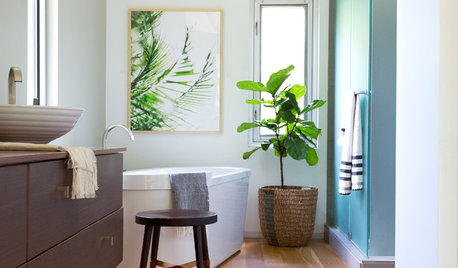
CONTEMPORARY HOMESMy Houzz: A Kansas City Family Home Embraces Nature
An interior designer-architect couple design and build their home in the woods
Full Story
MY HOUZZColor, Heirlooms and Artwork Refresh a Kansas City Home
See how this 1922 Colonial Revival house got a bright update
Full Story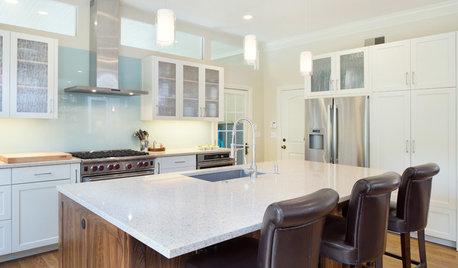
KITCHEN DESIGNModern Storage and Sunshine Scare Away the Monster in a Kansas Kitchen
New windows and all-white cabinetry lighten a kitchen that was once dominated by an oversize range hood and inefficient cabinets
Full Story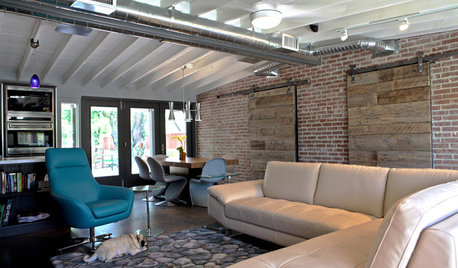
ARCHITECTUREHVAC Exposed! 20 Ideas for Daring Ductwork
Raise the roof with revealed ducts that let it all hang out — and open a world of new design possibilities
Full Story
GREEN BUILDINGOff the Grid: Ready to Pull the Plug on City Power?
What to consider if you want to stop relying on public utilities — or just have a more energy-efficient home
Full Story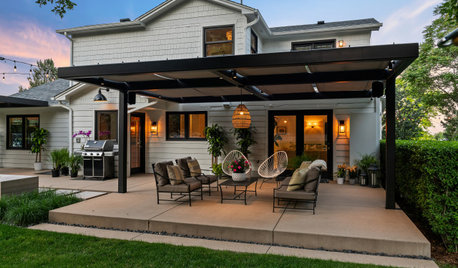
WORKING WITH PROSYour Guide to a Smooth-Running Construction Project
Find out how to save time, money and your sanity when building new or remodeling
Full Story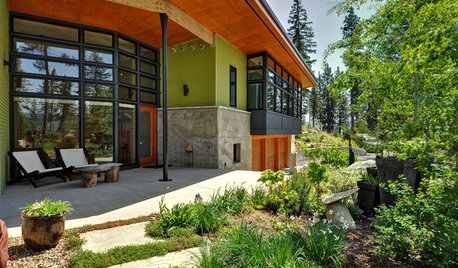
BUDGETING YOUR PROJECTConstruction Contracts: What Are General Conditions?
Here’s what you should know about these behind-the-scenes costs and why your contractor bills for them
Full Story
CONTRACTOR TIPSLearn the Lingo of Construction Project Costs
Estimates, bids, ballparks. Know the options and how they’re calculated to get the most accurate project price possible
Full Story
BUDGETING YOUR PROJECTConstruction Contracts: What to Know About Estimates vs. Bids
Understanding how contractors bill for services can help you keep costs down and your project on track
Full Story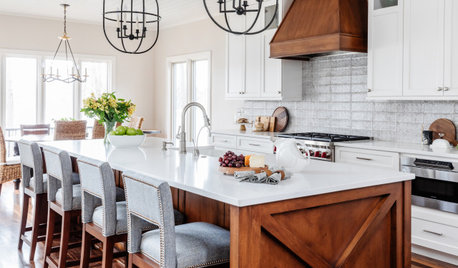
KITCHEN WORKBOOK4 Steps to Get Ready for Kitchen Construction
Keep your project running smoothly from day one by following these guidelines
Full Story


Springtime Builders